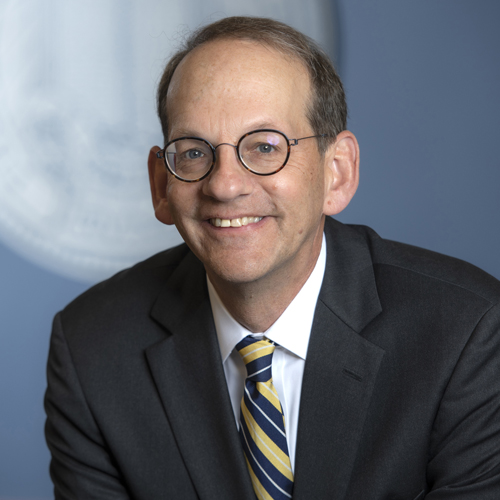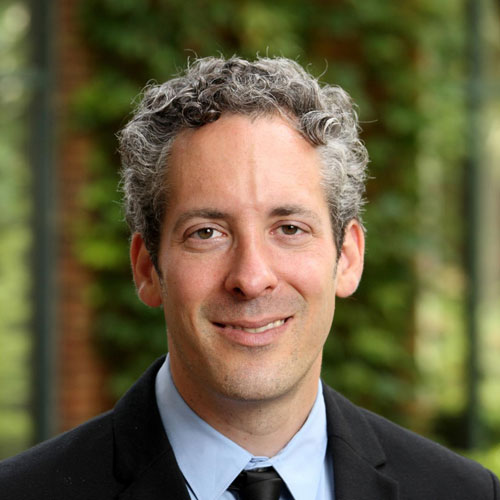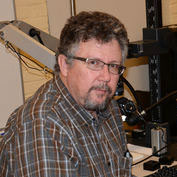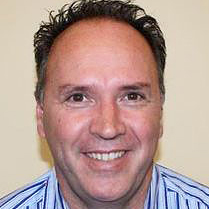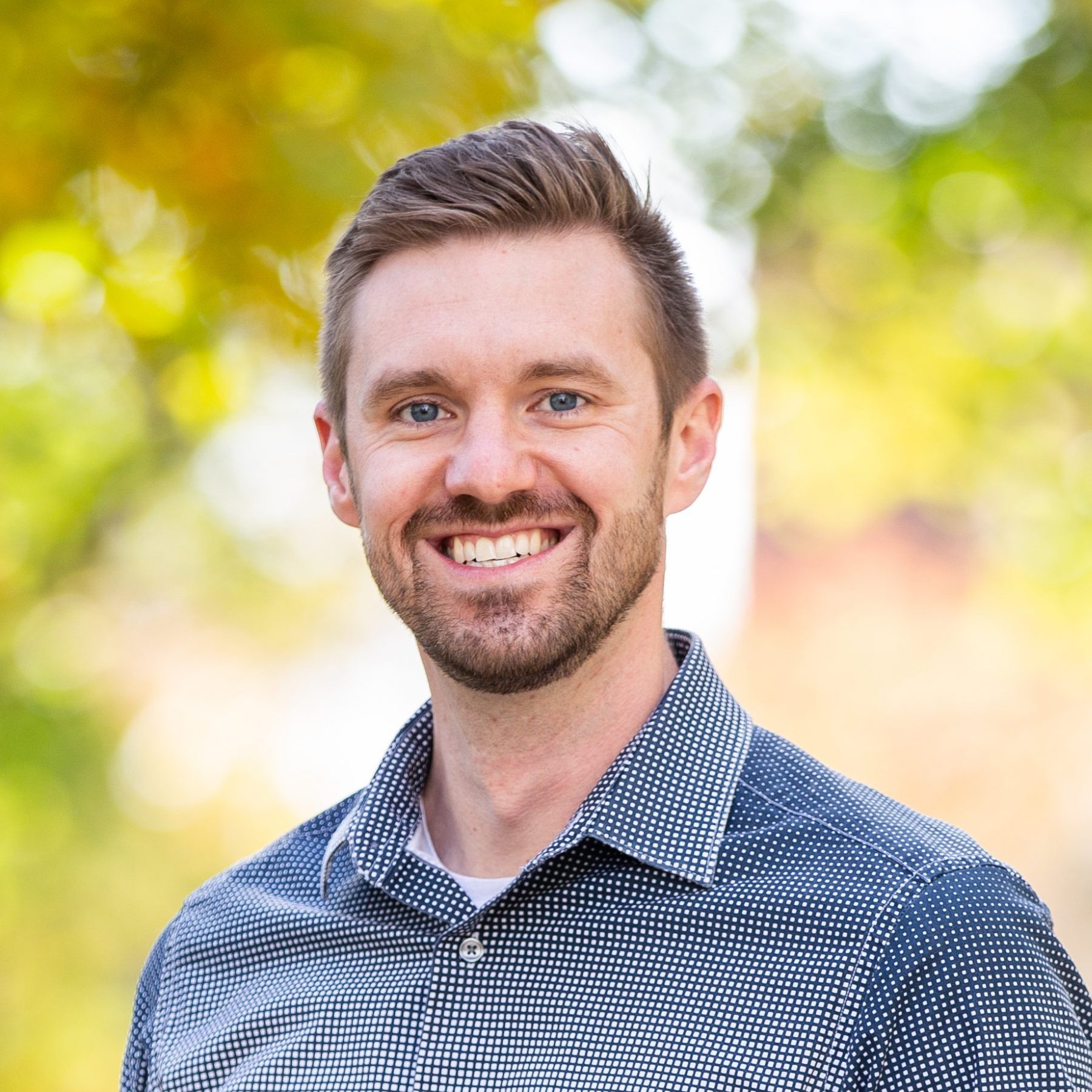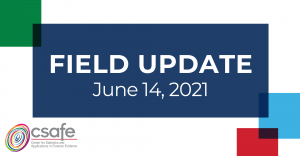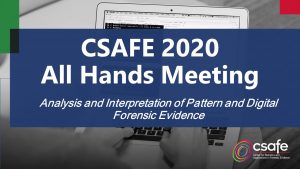Overarching GOALS
The CSAFE team is committed to training and education for a wide range of forensic science stakeholders, including forensic practitioners and law enforcement, lawyers and judges, statisticians and measurement scientists, students of all levels (from pre-college through postgraduate), and the public. Through a new partnership with West Virginia University, we continue to develop courses and curricula on probability and statistics for undergraduate and graduate forensic science students.
Looking for
WEBINARS,
Short courses, presentations or publications
on Training & Education Projects?
Additional Team Members
Nita Farahany
farahany@duke.edu
Kori Khan
kkhan@iastate.edu
Robert Ramotowski (NIST)
robert.ramotowski@nist.gov
Kate Philpott
katephilpott@gmail.com
Karen Kafadar
kkafadar@virginia.edu
focus Areas
CSAFE researchers develop several mechanisms that provide education and training to forensic practitioners in crime laboratories and other forensic science providers. These include publicly available webinars (6-8 per year) that report on new research results and key issues in the field, and workshops offered at laboratories and conferences focused on probability and statistics tools for the analysis, interpretation and presentation of forensic evidence.
The forensic science community is actively engaged in research (e.g., black box studies) to assess the status of analysis evidence in various pattern disciplines (e.g., handwriting, shoeprints) and is also working to develop standards and guidelines for presenting interpretations and opinions regarding forensic evidence. In addition, research by CSAFE and other investigators is exploring new approaches to the analysis of forensic evidence. All of these activities suggest that increased awareness of key concepts from statistics and probability are critically important for forensic stakeholders including forensic science practitioners. During its initial funding period CSAFE has developed training materials and offered seminars, webinars and workshops that attempt to address this need. It is important that we continue and expand these activities in CSAFE 2.0.
The original workshop that was developed was a full-day workshop consisting of introductory material on probability and statistics followed by more detailed discussion of the various approaches to the analysis of forensic evidence (and the associated statistical issues). This material has been presented at a number of forensic laboratories and forensic conferences. In performing these workshops, we have identified a number of needs moving forward. One is the ability to deliver the material in a variety of lengths. For example, a 60-minute version was offered during one of the in-person OSAC meetings. In addition, it would clearly be valuable to offer the material through a series of webinars. Though not as good as in-person training, webinars can provide broader coverage. A final identified need is for trainings that address specific disciplines, especially discipline-specific results and research. This project is intended to address these identified needs.
CSAFE provides educational programs that target a large portion of the legal community, including coursework piloted at the University of Virginia and Duke University for law students; boot camps aimed at teaching practicing lawyers how to interact with forensic examiners; case-based workshops aimed at conveying probability and statistics concepts to lawyers and judges; and conferences that bring together lawyers, statisticians, and forensic practitioners. CSAFE also has created continuing legal education (CLE) materials and approaches and have presented at CLE programs across the country. Additionally our efforts are aimed at developing trainings, model policies, and procedures for prosecutors’ offices, police, and crime laboratories.
The goal of this project has been to design innovative educational programs to reach both law students and practicing lawyers, and connect them with forensic industry practices and professionals. We designed and disseminated curricula and course materials widely. We developed a novel mock trial “boot camp” for lawyers on forensics, in which they prepare and question a fingerprint examiner on the stand during a day-long trial. We convene forensic science seminars, for law students who write upper-level research papers, but also to bring together researchers and CSAFE collaborators. We have convened a CSAFE forensics, statistics and law conference, which has resulted in publications, and an interdisciplinary conversation between lawyers, judges, crime lab leadership, statisticians, psychologists, law professors and researchers across disciplines. We offer a unit on forensic science in the May judicial education program run by the Bolch Judicial Institute at Duke Law School, which convenes judges from around the country for high level discussions and training. A wide range of continuing legal education offerings have been provided as part of this project as well, to lawyers at the state and federal level. Each March this project assists with an all-day intensive forensic science training program for lawyers at Duke Law. We have published in law reviews, most accessible to lawyers, including by creating archives of judicial rulings on forensic science, to create resources for prosecutors, defense attorneys and judges. Our goal for CSAFE 2.0 is to expand this work, including by providing training with more informative materials, and by creating online legal repositories for both legal practitioners and forensic practitioners.
The goal of this project is to develop educational materials for teaching statistics as it is applied in forensic science targeting students from a range of backgrounds, including statistics students with limited prior knowledge of forensic science (who may become attracted to forensic applications and advance research goals and applications in forensic evidence), and forensic science students with limited prior knowledge of statistics (who can advance the application of statistics in forensic science). A specific goal of this project seeks to increase the statistical literacy of the forensic science workforce through encouraging the teaching of forensic statistics in forensic science masters programs. The project will assess interest in novel course offerings among accredited programs and will develop and pilot a new course at West Virginia University. Based on that pilot, the project will create learning materials that can be made available to other institutions.
CSAFE offers summer programs similar to those funded by the NSF’s Research Experiences for Undergraduate Programs. Undergraduate students in statistics and other quantitative areas are invited to spend two summer months carrying out research in statistics for forensic applications.
Forensic questions tend to be multidisciplinary with answers requiring contributions by scientists in different disciplines working together. This is one aspect of forensic practice that popular shows such as CSI have represented realistically. The popularity of those shows has spiked interest among undergraduates pursuing a variety of majors who are choosing a career in forensic practice.
During the initial funding period, students in statistics and other quantitative areas were invited to spend two summer months in Iowa State or Carnegie Mellon to learn about statistics relevant in forensic practice. Many of the students in the summer programs came from CSAFE’s minority partner institutions. The summer program was well received; students and their advisors have provided positive reports and have expressed an interest for these programs to continue.
We plan to expand the summer program to include one or two month long internships of students in collaborating crime labs. The program will offer students two options for summer research, funded by CSAFE: (1) spend two months in Iowa State or West Virginia or (2) spend two months at a crime lab, or combine both. The idea is to provide the students with a taste of research (at a partner institution) or practice (at a participating lab).
Knowledge transfer
Found 25 Results
Page 1 of 2
Page 1 of 2
Page 1 of 2
Statistical Interpretation and Reporting of Fingerprint Evidence: FRStat Introduction and Overview
Type: Presentation Slides,Short Courses Research Area(s): Forensic Statistics,Latent Print,Training and Education
Published: 2023 | By: Jeff Salyards
The FRStat is a tool designed to help quantify the strength of fingerprint evidence. Following lengthy development and validation with assistance from CSAFE and NIST, in 2017 the FRStat was implemented at the USACIL. FRStat is now freely available and…
Forensic Science in Legal Education
Type: Publication Research Area(s): Training and Education
Published: 2021 | By: brandon Garrett
In criminal cases, forensic science reports and expert testimony play an increasingly important role in adjudication. More states now follow a federal reliability standard, following Daubert v. Merrell Dow Pharmaceuticals and Rule 702, which call upon judges to assess the…
Hierarchical Bayesian non-response models for error rates in forensic black-box studies
Type: Publication Research Area(s): Forensic Statistics,Implementation and Practice,Training and Education
Published: 2023 | By: Kori Khan
Forensic science plays a critical role in the United States criminal legal system. Historically, however, most feature-based fields of forensic science, including firearms examination and latent print analysis, have not been shown to be scientifically valid. Recently, black-box studies have…
The ASCLD Forensic Research Committee and You: A Collaboration Worth Investigating
Type: Webinar Research Area(s): Forensic Statistics,Training and Education
Published: 2022 | By: Henry Maynard
This CSAFE webinar was held on November 17, 2022. Presenter: Henry Maynard Forensic Research Committee Chair, American Society of Crime Laboratory Directors Presentation Description: Over the last few years, the American Society of Crime Laboratory Directors (ASCLD) Forensic Research Committee…
handwriter: a Demonstration and Update on CSAFE Handwriting Analysis
Type: Webinar Research Area(s): Forensic Statistics,Handwriting,Training and Education
Published: 2022 | By: Dr. Alicia Carriquiry
This CSAFE webinar was held on October 18, 2022. Presenters: Alicia Carriquiry Director, CSAFE Distinguished Professor and President’s Chair, Department of Statistics – Iowa State University Stephanie Reinders Research Scientist, CSAFE Presentation Description: Forensic handwriting analysis relies on the principle…
Tutorial on Likelihood Ratios with Applications in Digital Forensics
Type: Webinar Research Area(s): Digital,Forensic Statistics,Training and Education
This CSAFE webinar was held on September 15, 2022. Presenters: Rachel Longjohn PhD Student - Department of Statistics, University of California, Irvine Dr. Padhraic Smyth Chancellor's Professor - Departments of Statistics and Computer Sciences, University of California, Irvine Presentation Description:…
Ensemble SLRs for Forensic Evidence Comparison
Type: Webinar Research Area(s): Forensic Statistics,Implementation and Practice,Training and Education
This CSAFE webinar was held on August 25, 2022. Presenter: Danica Ommen Assistant Professor – Department of Statistics, Iowa State University Presentation Description: To strengthen the statistical foundations of forensic evidence interpretation, likelihood ratios and Bayes factors are advocated to…
Blind Testing in Firearms Examination: Preliminary Results, Benefits, Limitations, and Future Directions
Type: Webinar Research Area(s): Forensic Statistics,Implementation and Practice,Training and Education
This CSAFE webinar was held on June 23, 2022. Presenters: Maddisen Neuman Quality / Research Associate, Houston Forensic Science Center Presentation Description: Open proficiency tests created by external vendors are used to meet accreditation requirements and demonstrate examiner competence;…
Extracting Case-Specific Data from Validation Studies
Type: Webinar Research Area(s): Forensic Statistics,Implementation and Practice,Training and Education
This CSAFE webinar was held on May 10, 2022. Presenters: Steve Lund Statistical Engineering Division, NIST Hari Iyer Statistical Engineering Division, NIST Presentation Description: The legal and scientific communities agree that any forensic method or algorithm should undergo validation testing…
Sampling for Forensic Practitioners Short Course
Type: Short Courses Research Area(s): Forensic Statistics,Implementation and Practice,Training and Education
This three-session short course took place on March 25, April 1, and April 8, 2022. Recordings of completed sessions and practicum materials can be found below. Presenters: Alicia Carriquiry Director of CSAFE Iowa State University Joseph Zemmels Graduate Research Assistant…
Forensic Science in Legal Education
Type: Publication Research Area(s): Implementation and Practice,Training and Education
Published: 2021 | By: Brandon Garrett
In criminal cases, forensic science reports and expert testimony play an increasingly important role in adjudication. More states now follow a federal reliability standard, following Daubert v. Merrell Dow Pharmaceuticals and Rule 702, which call upon judges to assess the…
Improving Forensic Decision Making: a Human-Cognitive Perspective
Type: Webinar Research Area(s): Training and Education
This CSAFE webinar was held on February 17, 2022. Presenter: Itiel Dror, PhD University College London Presentation Description: Humans play a critical role in forensic decision making. Drawing upon classic cognitive and psychological research on factors that influence and underpin…
Using Mixture Models to Examine Group Differences: An Illustration Involving the Perceived Strength of Forensic Science Evidence
Type: Webinar Research Area(s): Implementation and Practice,Training and Education
This CSAFE webinar was held on December 9, 2021. Presenter: Naomi Kaplan-Damary, PhD The Hebrew University of Jerusalem Presentation Description: Forensic examiners compare items to assess whether they originate from a common source. In reaching conclusions, they consider the probability…
Bloodstain Pattern Analysis Black Box Study
Type: Webinar Research Area(s): Bloodstain,Training and Education
This CSAFE webinar was held on October 14, 2021. Presenters: Austin Hicklin Noblis Forensic Science Group, Director Paul Kish Forensic Consultant, Paul Erwin Kish Forensic Consultant and Associates Kevin Winer Director, Kansas City Police Crime Laboratory Presentation Description: This study…
Assessing the resources and requirements of statistics education in forensic science
Type: Poster Research Area(s): Training and Education
Published: 2020 | By: Xiaoyi Yang
With the increasing ability to easily collect and analyze data, statistics plays a more critical role in scientific research activities, such as designing experiments, controlling processes, and understanding or validating lab results. As a result, incorporating statistics training into the…
Sampling for Forensic Practitioners Short Course
Type: Short Courses Research Area(s): Forensic Statistics,Implementation and Practice,Training and Education
The first session of this two-session short course took place on September 30, 2021. The second session took place on October 7, 2021. Recordings of both sessions can be found below. Presenter: Alicia Carriquiry Director of CSAFE Iowa State University…
A Survey of Fingerprint Examiners’ Attitudes towards Probabilistic Reporting
Type: Webinar Research Area(s): Latent Print,Training and Education
This CSAFE webinar was held on September 22, 2021. Presenter: Simon Cole University of California, Irvine Presentation Description: Over the past decade, with increasing scientific scrutiny on forensic reporting practices, there have been several efforts to introduce statistical thinking and…
CSAFE 2021 Field Update
Type: Presentation Slides,Webinar Research Area(s): Bloodstain,Digital,Firearms and Toolmarks,Footwear,Forensic Statistics,Handwriting,Implementation and Practice,Latent Print,Training and Education
The 2021 Field Update was held June 14, 2021, and served as the closing to the first year of CSAFE 2.0. CSAFE brought together researchers, forensic science partners and interested community members to highlight the organization’s achievements, identify areas for…
Mock Juror Perceptions of Forensics
Type: Webinar Research Area(s): Implementation and Practice,Training and Education
This CSAFE Center Wide webinar was presented on December 8, 2020 by: Brandon Garrett – L. Neil Williams Professor of Law, Faculty Director at the Wilson Center for Science and Justice Nicholas Scurich – Associate Professor of Criminology, Law &…
CSAFE 2020 All Hands Meeting
Type: Webinar Research Area(s): Bloodstain,Digital,Firearms and Toolmarks,Footwear,Forensic Statistics,Handwriting,Implementation and Practice,Latent Print,Training and Education
The 2020 All Hands Meeting was held May 12 and 13, 2020 and served as the closing to the last 5 years of CSAFE research and focused on kicking off new initiatives for the next phase of the center, CSAFE…
Page 1 of 2
COMMUNITY CALL-TO-ACTION
Want to collaborate with CSAFE on a project. Contact us to share your idea.


